Music uses the laws of vibration to manifest aurally what exists at the center of everything. Into our reality springs a non-visual harmonic law that is universal. The notes and intervals of music speak directly to the chakra centers and causes them to vibrate in harmony to the vibration of a string or vocal chords, speakers moving through the air, or the sound of someone’s lips making a farting noise through a metal tube.
Music uses the laws of physics and mathematics to bring out an emotional response in the listener. The music of the Western world uses a mathematical system based on Twelve. All the songs you have ever known and sang along to in your life use the same simple laws based on the number twelve. Once you know what the simple laws are, you can make music. It’s just like telling the time and measuring time. Once you know it, you know it. Most people have no trouble measuring time, in fact it is a skill most of us have mastered by the age of, say, twelve.
You can think of music just like time. The clock is a circle divided evenly into twelve hours. An octave of music is divided evenly into twelve semitones. Therefore, if you can assign the twelve semitones of an octave of music to the twelve numbers on the clock, and draw a line from each number to each other number, you have a harmonisphere. The clock measures time clockwise forward and counterclockwise backward. The harmonisphere measures musical intervals clockwise up in pitch and counterclockwise down in pitch. The lines on the harmonisphere each measure the harmony (and the interval) between the two notes that it joins.
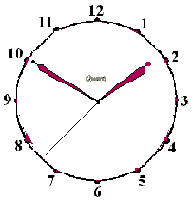
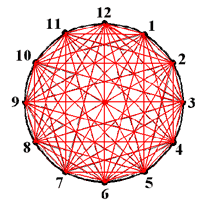 Clock Harmonisphere
Clock Harmonisphere
The mathematics of the harmonisphere are amazing. It is all about symmetry and mirrored pairs. Each line on the harmonisphere measures two intervals, depending upon which note is on top. The line that measures up a minor third (three semitones) also measures down a major sixth (nine semitones). The mirrored pairs are:
Minor 2nd - Major 7th
Major 2nd - Minor 7th
Minor 3rd - Major 6th
Major 3rd - Minor 6th
Perfect 4th - Perfect 5th
The diminished 5th is it’s own mirrored image. In fact, the dim 5th is the mirror.
SYMMETRY IN MUSIC
You can see the symmetry in music using a mirror and a piano. There are two spots where the mirror shows what’s really there, across the D note and across the Ab(G#) note. (Try this at home). The notes that are mirror images of each other in either picture are: Db-Eb, C-E, B-F, Bb-Gb, and A-G. Ab and D are reflections of themselves:
Similarly, when you put a mirror across the Harmonisphere, there are two positions the harmonisphere can sit in where the mirror goes from D to Ab, and all the other notes have the same mirrored pairs as the piano:
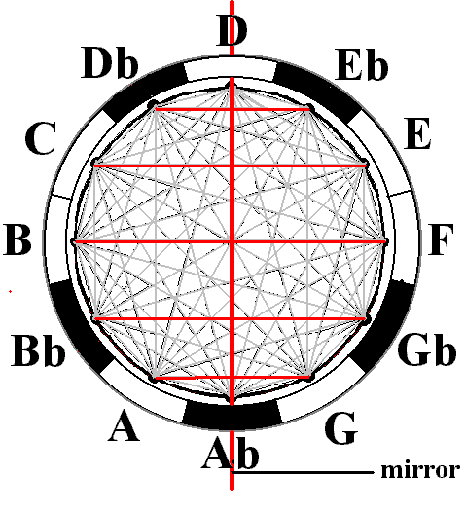
Fig. 1
.
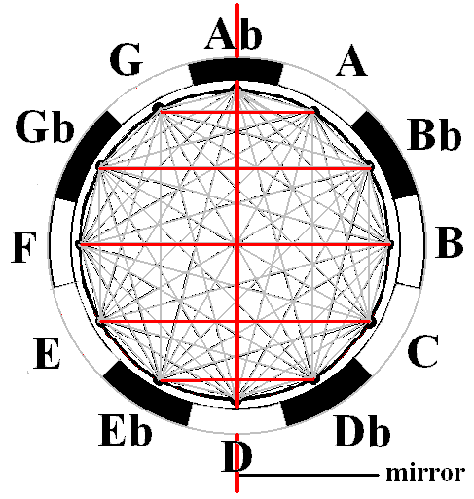 Fig. 2
Fig. 2
If we use fig.1 and disregard the black notes, we are left with the seven notes that make up the C major scale.
.
If you take the seven white notes on a piano and make three-note chords or triads, using every second note, you have seven chords: three major chords, three minor chords and one diminished chord:
.
If you play each of these chords on the piano in the mirror, the major chords are mirrors of the minor chords (and vice versa), and the diminished chord is a mirror of itself:
When we measure the same chords on the harmonisphere, the seven chords have the same mirrored combinations as the piano:


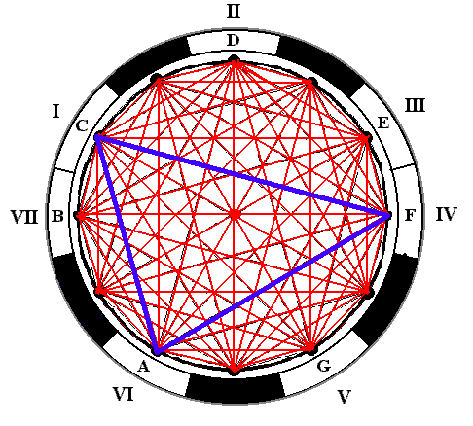
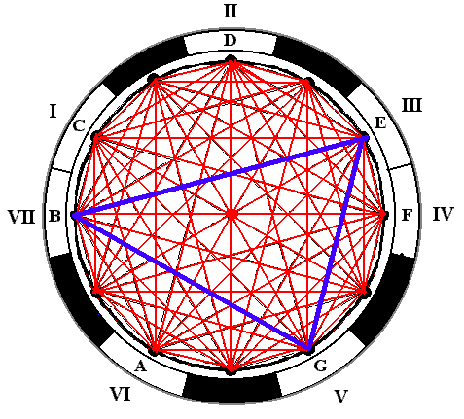
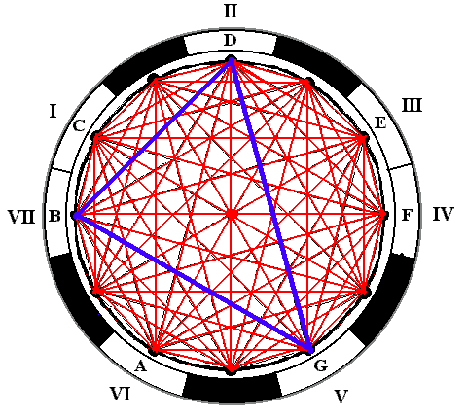
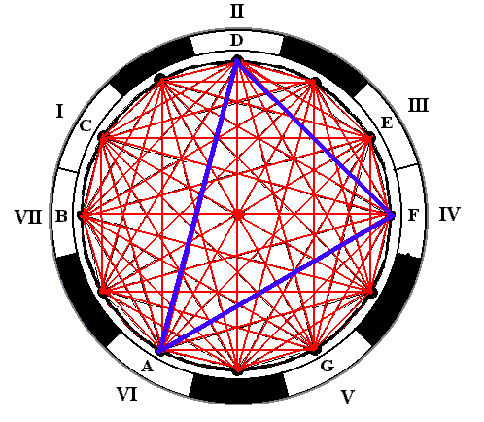
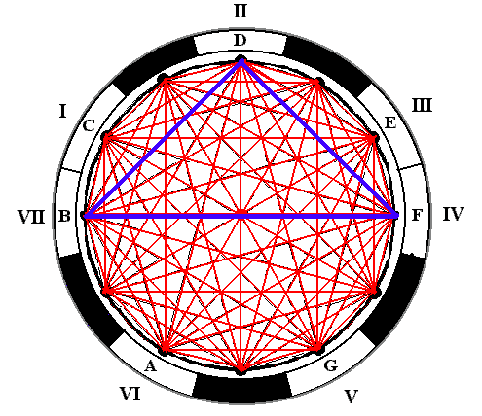


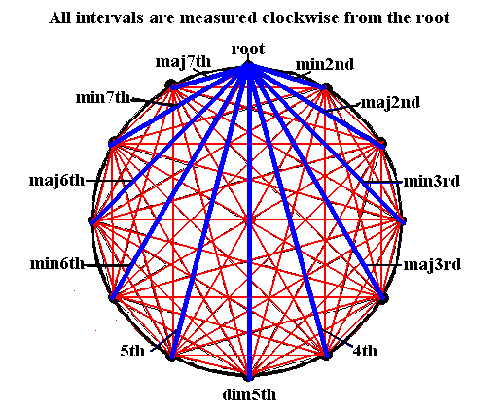
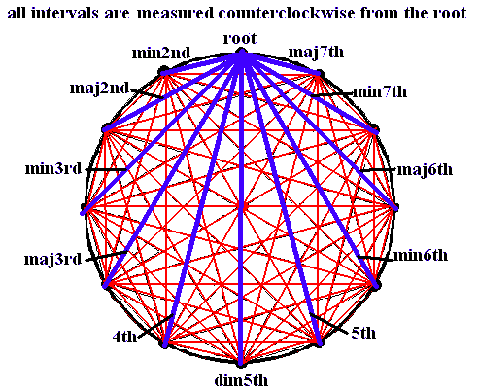
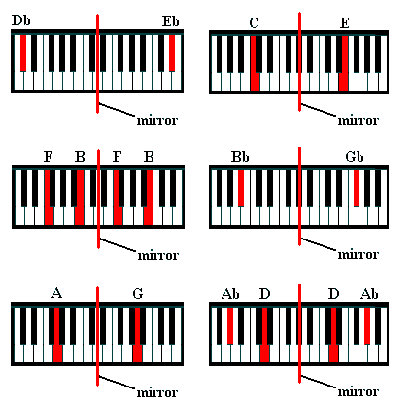


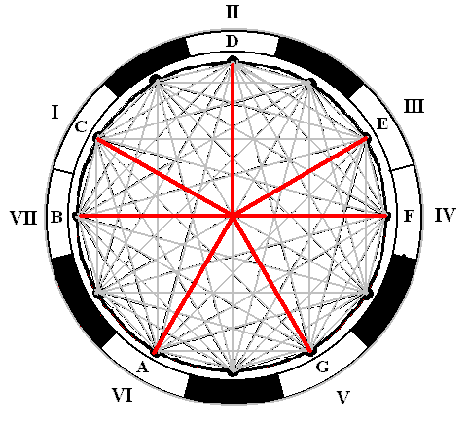
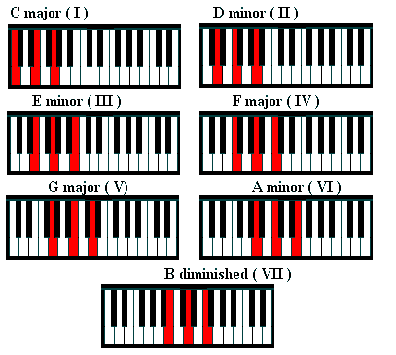
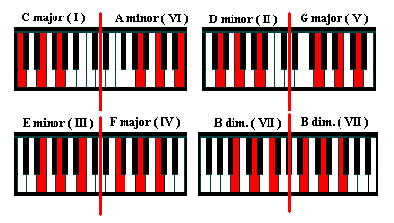




Aucun commentaire:
Enregistrer un commentaire